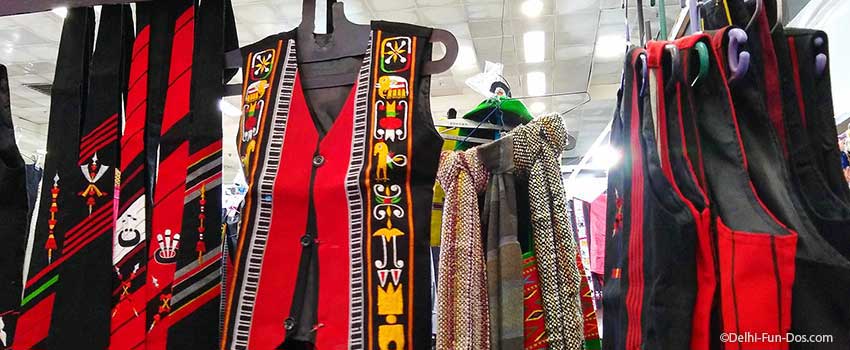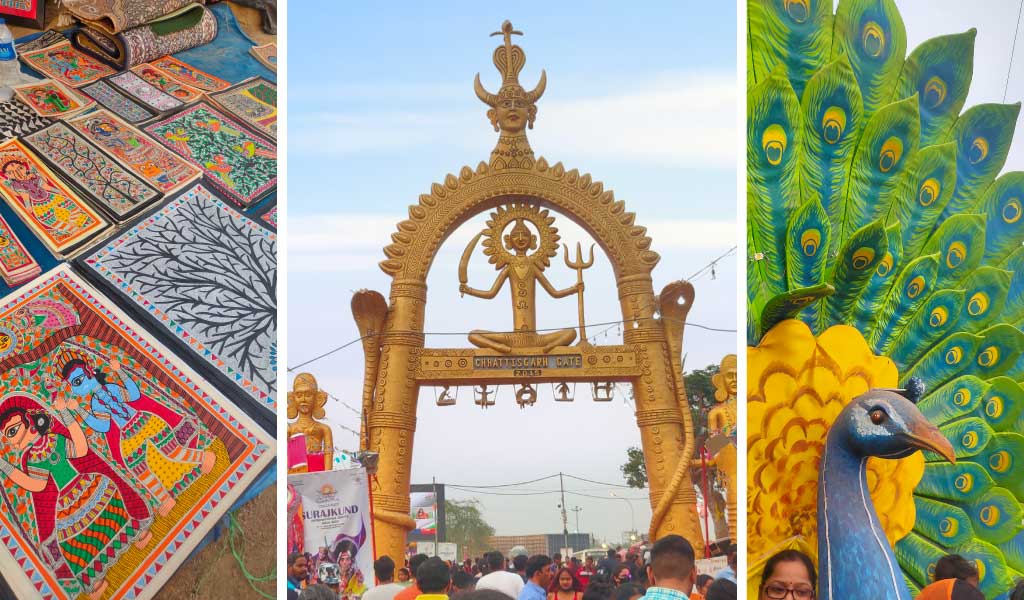Craft enthusiasts could be aware of the term Geography Indications popularly called “GI”. Even otherwise, GI is not a very unfamiliar expression given its recurrent feature in mainstream media. An exhibition of Geographical Indication handicrafts is ongoing at Delhi Haat, INA from 1st to 15th September 2019. Before we get to that, GI behooves some explanation.
What is a geographical indication

Geographical Indication or GI is a modern kind of Intellectual Property Right. It is a symbol or lexical term that is applied on goods that corresponds to a specific place or geographical location. India adopted this form of IPR in the year 1999 by virtue of The Geographical Indications of Goods (Registration and Protection) Act.
Advantages of Geographical Indication
A GI is an indication of source and acts as a certificate that the product possesses certain qualities, is manufactured based on traditional methods, and/or bears recognition because of its origin.
The advantage of GI is that the protection system relates a certain item to its original and authentic source. It prevents the manufacture and transaction of fakes or spurious items that may look like the actual item but may not be of the same quality as the actual item. For example, Kanchipuram silk saris, a GI from Tamil Nadu, is made under certain standards such as the quality of silk, design motifs, weaving process, etc. A sari not from Kanchipuram, being sold as a Kanchipuram silk, may not reflect the qualities of the original.
A GI not only indicates the origin but also endorses that a certain product has been manufactured based on the traditional knowledge and skill associated with it. In fact the GI authorities do regular check up on GI holder so as to ensure that strict product process is maintained.
Why is GI important to us
Many would wonder how can GI tag affect us the average consumer. For one, this ensures that you are not being taken for a ride in terms of an original product. If you are inspired to purchase an item based on a prior experience a GI tag would ensure that your subsequent experiences of that item is at par with your original view. It also helps the craftsmen of a certain area to practice their craft and ensure that the knowledge behind that craft does not die. It gives them a safe market, and most important, helps them combat with undue competition that they might face from cheaper spurious products on account of similar products being manufactured in other areas.
This post is perhaps a little pedantic but we thought that some things just need to be said, more so because there is still an enormous knowledge black hole in terms of GIs. Not only the customers but also holders are not really aware of the potential of this particular intellectual property right. Hence they are pretty lackadaisical in terms of using GI tags on their products and making a consumer known that a certain item is authenticated through a GI. Hence it is better Than a similar item that does not carry a GI tag.

What to expect at Delhi Haat fair
The exhibition at Delhi Haat has some stalls that are carrying products marked under geographical indications. In fact the boards in front of the stalls indicate the particular geographical area from which they originate. One is rather surprised that some of these items that we saw at Delhi Haat are pretty regular to any handicrafts fan. For example, blue pottery from Jaipur or rugs, durries, and carpets from Mirzapur are common items that we see in most handicraft exhibitions in Delhi NCR. However, we perhaps might not have known that these are GIs related to those areas. The other GI goods that we saw are Phulkari from Punjab, Kalamkari from Srikalahasti, Telangana, and Kullu shawls from Himachal Pradesh.
What could have been better
The exhibition at Delhi Haat only carries certain GI handicrafts and weaves. There are however whole lot of food items from all over India that are very popular and have been certified as GIs. In fact the first item to get a GI tag is Darjeeling tea from West Bengal. Thereafter a host of food items from Bengal and other parts of India have been regularly recorded as Geographical Indications. There is unfortunately not a single stall selling any food item in the exhibition. This we thought was a huge lapse in terms of promoting the cause.
We also missed some rare craft items that can only be preserved through promotion. For instance, the all-metal Aranmul mirror from Kerala that is rarely seen up north, would have been a very interesting entry to this fair.
That said, given the diversity e of our country and that crafts, weaves, and food habits change every few kilometers, we appreciate that it is difficult to bring all GI products under the ambit of a single event. Hence the Geographical Indication exhibition at Dilli Haat is a great start to make consumers aware, promote the cause of artisans, and preserve the authenticity of the traditional handloom and handicrafts of India.




0 Comments